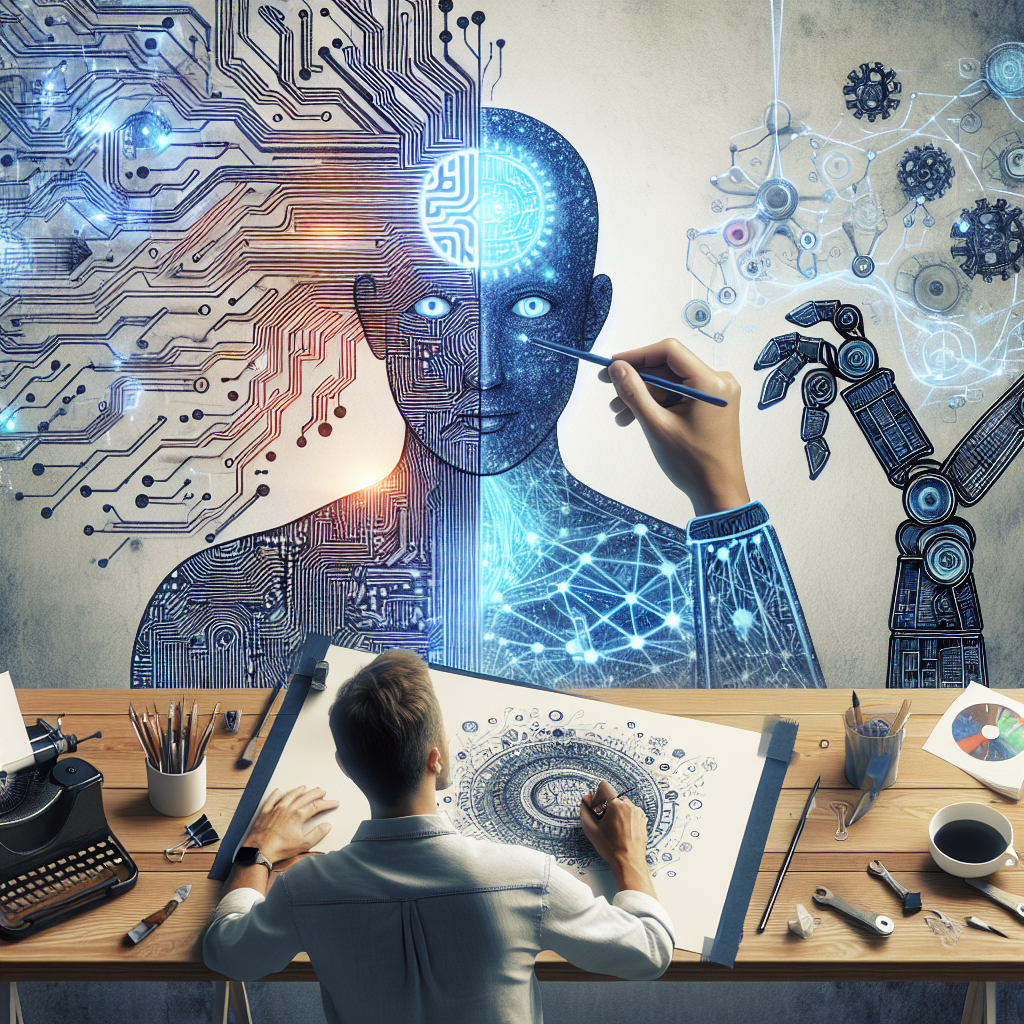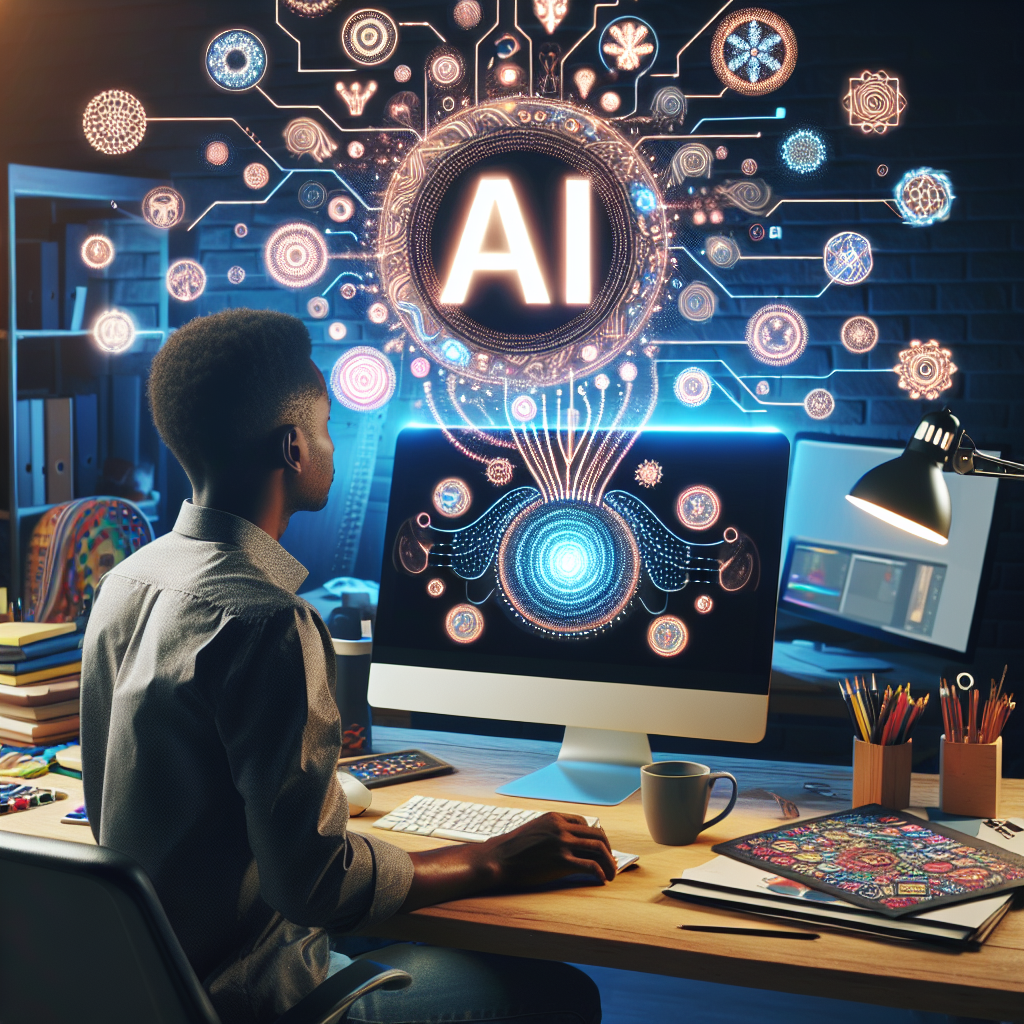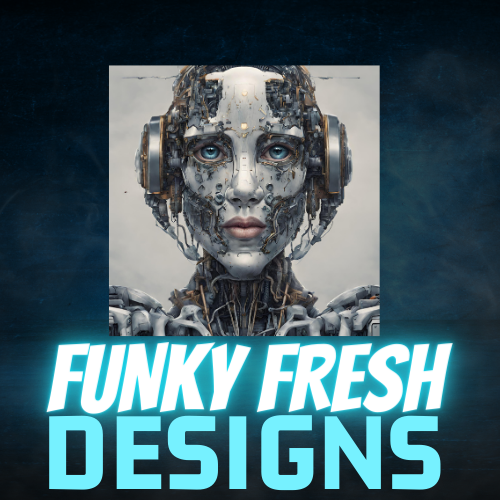Staying Ahead: AI In Design. In the fast-paced world of design, innovation is key to staying ahead of the competition. From graphic design to architecture, the integration of Artificial Intelligence (AI) has revolutionized the way we create and conceptualize. In this article, we will explore the myriad ways AI is reshaping the design industry, from generating intricate patterns to predicting consumer preferences. Brace yourself for a journey into the future of design where creativity and technology intertwine seamlessly.
Understanding AI in Design
AI, or Artificial Intelligence, has become a buzzword in various industries, and design is no exception. But what exactly is AI in the context of design? AI refers to the ability of machines to mimic human intelligence and perform tasks that typically require human cognitive abilities, such as problem-solving, pattern recognition, and decision-making. In design, AI can be a powerful tool that enhances creativity, improves the user experience, and addresses ethical considerations.
What is AI?
Artificial Intelligence, at its core, involves the development of intelligent machines capable of perceiving the environment, learning from experience, and making decisions based on data. These machines can process information, understand context, and carry out tasks with minimal human intervention. AI can encompass various technologies, such as machine learning, natural language processing, computer vision, and robotics, all designed to emulate and augment human intelligence.
AI in Design
AI has brought a paradigm shift in the field of design by introducing innovative ways to approach and solve complex problems. It has the potential to revolutionize the creative process, automating repetitive tasks, and enabling designers to explore new design possibilities. Through AI, designers can process vast amounts of data, generate design ideas, and create personalized user experiences. The integration of AI technology in design can lead to more efficient workflows, increased productivity, and the ability to create unique and impactful designs.

Benefits of AI in Design
The incorporation of AI in design brings numerous benefits to designers and the design process as a whole. One primary advantage is the ability to enhance creativity. AI-powered tools can generate design ideas based on existing data, helping designers overcome creative blocks and explore new avenues. Additionally, AI automates repetitive tasks, freeing up designers’ time to focus on more strategic and high-level aspects of the design process. AI also enables designers to improve accessibility by creating inclusive and user-friendly designs. By leveraging AI, designers can create more personalized and tailored user experiences, leading to increased user satisfaction and engagement.
AI Tools for Design
AI-powered design software has emerged as a game-changer in the design industry. These tools leverage AI algorithms to assist designers in various design-related tasks, such as creating layouts, selecting color schemes, and suggesting design elements. These tools analyze data from various sources, including user preferences and design trends, to provide intelligent recommendations and streamline the design process. This integration of AI in design software allows designers to work more efficiently and produce higher quality designs.
Generative design tools take AI in design a step further by generating design options based on specific input parameters. These tools use algorithms to explore countless design possibilities and come up with optimized solutions. Generative design tools not only save time but also enable designers to explore innovative and unconventional design ideas that may not have been considered otherwise. By leveraging these tools, designers can push the boundaries of creativity and explore uncharted design territories.
Virtual assistants, powered by AI, have also found their place in the design community. These assistants act as friendly and intelligent companions, helping designers with various tasks, such as scheduling, research, and organizing design assets. Virtual assistants can also provide design suggestions and feedback, acting as a valuable sounding board for designers. By working alongside virtual assistants, designers can streamline their workflow, access relevant information quickly, and receive timely assistance, ultimately enhancing their productivity and creativity.

Enhancing Creativity with AI
Creativity is an integral aspect of design, and AI offers exciting opportunities to enhance and expand upon designers’ creative abilities. One significant way AI boosts creativity is through AI-generated design ideas. By analyzing vast amounts of design data and patterns, AI algorithms can generate design concepts, color palettes, typography choices, and more. These AI-generated ideas serve as a rich source of inspiration and can help designers overcome creative blocks or find new directions for their projects. AI acts as a creative assistant, providing fresh perspectives and helping designers discover untapped creative potential.
Moreover, AI can automate repetitive and mundane tasks that often plague designers’ workflow. By taking over these tasks, such as resizing images, organizing files, or converting file formats, AI frees up designers’ time and energy for more strategic and creative endeavors. Designers can focus on ideation, conceptualization, and refining their designs, knowing that AI is handling the mundane and repetitive aspects of their work. This automation not only increases efficiency but also empowers designers to concentrate on the aspects of design that truly require their creative expertise.
Furthermore, AI empowers designers to explore new design possibilities by analyzing vast datasets and identifying patterns and trends. AI algorithms can identify user preferences, market trends, and design patterns, providing valuable insights to designers. These insights help designers make informed decisions, improve their designs, and stay ahead of the competition. By leveraging AI to uncover new design avenues and experiment with innovative ideas, designers can push the boundaries of their creativity and produce cutting-edge designs.
AI for User Experience Design
User experience (UX) design plays a critical role in creating products that are intuitive, engaging, and delightful for users. AI technology offers several ways to enhance the user experience and create highly personalized interactions.
Personalization is a key aspect of AI in UX design. AI algorithms can analyze user data, such as preferences, behavior, and demographics, to create personalized experiences. This personalization can range from personalized recommendations to tailored interfaces that adapt to individual user preferences. By leveraging AI, designers can create products that feel tailor-made for each user, increasing user satisfaction and engagement.
Moreover, AI enables designers to analyze user behavior and gather insights into how people interact with a product or interface. AI algorithms can track and analyze user interactions, such as click patterns, browsing history, and navigation paths, providing designers with valuable data to make informed design decisions. By understanding how users engage with a product, designers can identify areas for improvement, optimize the user flow, and deliver a better overall user experience.
Accessibility is another area where AI can make a significant impact in UX design. AI algorithms can analyze and interpret user behavior and preferences to create accessible designs that cater to a wide range of users. For example, AI can automatically adjust the font size and color contrast based on user preferences or recommend alternative content formats for users with specific accessibility needs. By incorporating AI algorithms into the design process, designers can ensure that their products are inclusive and accessible to all users.
Creating Ethical AI Designs
As AI continues to impact the design industry, it is essential to address the ethical considerations that arise in the context of AI design. Designers must embrace ethical practices to ensure that AI-powered designs are fair, transparent, and respectful of user privacy.
Addressing bias in AI is a crucial aspect of creating ethical designs. AI algorithms learn and make decisions based on the data they are trained on. If the training data is biased, the AI system may also exhibit bias, leading to unfair or discriminatory outcomes. Designers must carefully curate and analyze the data used to train AI models to minimize bias and ensure that AI designs do not perpetuate harmful stereotypes or discriminate against certain groups of users.
Transparency is another essential aspect of ethical AI design. Users should be informed when they are interacting with AI systems, understanding what data is being collected, how it is being used, and what decisions or recommendations are based on that data. Designers must make AI-generated designs transparent, allowing users to understand the reasoning behind the AI’s suggestions or decisions. By fostering transparency, designers can build trust with users and create designs that align with ethical principles.
Respecting user privacy is crucial when designing AI-powered systems. AI often relies on collecting and analyzing user data to provide personalized experiences and recommendations. Designers must implement robust privacy measures, such as anonymization, data encryption, and clear data usage policies. It is essential to obtain user consent and ensure that user data is protected and used responsibly. By prioritizing user privacy, designers can create AI designs that respect users’ rights and instill confidence in the users’ interactions with AI systems.
Challenges in AI Design
While AI offers immense potential in the design field, it also poses several challenges that designers must navigate.
One significant challenge is the potential lack of human touch in AI-generated designs. AI algorithms excel at analyzing and processing large amounts of data, but they may not capture the nuances of human creativity and intuition. Designers must find the balance between leveraging AI tools to enhance their creative process while retaining their unique human touch. By combining AI capabilities with human expertise, designers can create designs that are both functional and aesthetically pleasing.
Ethical considerations are another challenge in AI design. As mentioned earlier, bias in AI algorithms can lead to unfair outcomes or discriminatory practices. Designers must actively address these ethical concerns and ensure that AI-powered designs are fair, unbiased, and inclusive. Moreover, designers must stay updated with the rapidly evolving field of AI and continuously adapt their design practices to align with changing ethical standards.
Furthermore, the impact of AI on the job market is a concern for designers. As AI automates certain design tasks, there is a fear that it may replace human designers altogether. However, it is important to view AI as a tool that augments human capabilities rather than a substitute. By embracing AI as a creative assistant, designers can focus on higher-level aspects of design and leverage AI to streamline their workflow and generate new ideas. Designers must adapt, upskill, and embrace the disruptive nature of AI to ensure their continued relevance in the evolving design industry.
Collaboration between Humans and AI
the future of AI in design lies in the collaboration between humans and AI systems. Rather than viewing AI as a threat, designers can embrace AI as a partner in the creative process. This collaboration can take various forms, enabling designers to leverage AI capabilities while retaining their creative vision.
One form of collaboration is the human-AI partnership in design. Designers and AI systems can work together to achieve optimal design outcomes. AI algorithms can analyze vast amounts of data, provide design recommendations, and assist in the iterative design process. Designers, on the other hand, can provide the human touch, aesthetic judgment, and domain expertise. This partnership allows designers to leverage AI’s computational power and insights while retaining control over the design decisions.
Designing AI with human input is another aspect of collaboration. As AI systems continue to evolve, designers have an active role in shaping and guiding AI technologies. By actively participating in the development and training of AI systems, designers can ensure that AI aligns with their creative vision and ethical principles. Designers can shape the algorithms, dataset selection, and decision-making processes to create AI systems that best serve the design community.
Lastly, AI can act as a creative assistant for designers. By analyzing vast amounts of design data, AI algorithms can provide designers with intelligent suggestions, generate design variations, and offer feedback on designs. This collaboration allows designers to explore new design possibilities, gain fresh perspectives, and challenge their existing design approaches. AI becomes a valuable tool that designers can rely on for inspiration, insights, and optimization.
AI Trends in Design
The field of AI in design is constantly evolving, and several trends continue to shape its trajectory.
AI-powered prototyping is a trend that allows designers to explore design concepts more rapidly and efficiently. By leveraging AI algorithms, designers can quickly generate and iterate on design prototypes. These prototypes can range from simple wireframes to interactive mock-ups, effectively communicating design ideas and gathering feedback from stakeholders. AI-powered prototyping speeds up the design iteration process, allowing designers to refine their designs, address any issues, and deliver high-quality solutions.
Voice interfaces are another area where AI is making significant inroads in design. Voice-activated assistants, such as Siri and Alexa, have become commonplace in our daily lives, and designers are leveraging AI to create voice interfaces in various applications. Voice interfaces enable users to interact with technology using natural language, making user interactions more intuitive and hands-free. Designers must consider the unique challenges of voice interfaces, such as natural language processing, understanding context, and anticipating user needs. By combining AI with voice interfaces, designers can create seamless and engaging user experiences.
The integration of AI and augmented reality (AR) is another exciting trend in design. AR overlays digital information onto the real world, transforming how users interact with their environment. AI can enhance AR experiences by analyzing real-time data, such as user movements, locations, and preferences, to provide personalized and context-aware content. This integration of AI and AR opens up new possibilities for designers to create immersive and interactive experiences that blur the line between the physical and digital realms.
Ethical Guidelines for AI Design
To ensure that AI-driven designs are ethical and responsible, designers must follow established ethical guidelines. These guidelines provide a framework for creating AI designs that are fair, transparent, and respectful of user rights.
Establishing ethical frameworks is a crucial step in AI design. Designers must adhere to ethical guidelines and principles that promote fairness, accountability, and safety. By having a set of ethical standards in place, designers can ensure that AI designs align with ethical principles and do not cause harm or perpetuate bias or discrimination.
Addressing bias and discrimination is a crucial consideration in AI design. Designers should be proactive in identifying and mitigating biases in AI algorithms and data. This involves carefully curating training data, conducting regular audits of AI systems, and continuously monitoring for potential bias. Designers must also ensure diversity and inclusiveness in the design process, incorporating diverse perspectives and feedback to minimize bias in AI designs.
Accountability is another critical aspect of ethical AI design. Designers should take responsibility for the design decisions made by AI systems and be transparent about the limitations and potential risks involved. Clearly communicating the abilities and limitations of AI systems to users fosters trust and enables users to make informed decisions. Designers should also be open to feedback and accountability mechanisms, ensuring that AI designs can be continually improved and refined.
Preparing for the Future
As AI technology continues to advance and shape the design industry, designers must prepare themselves for the future by embracing continuous learning and adaptation.
Continuous learning and adaptation are essential to stay ahead in the rapidly evolving landscape of AI in design. Designers must keep themselves updated with the latest advancements in AI and how they can be applied to design. By staying informed and learning about new AI tools, techniques, and best practices, designers can harness the full potential of AI and make informed design decisions.
Upskilling designers for AI involves developing a deep understanding of AI technologies, algorithms, and their implications on design practices. Designers need to acquire skills in data analysis, machine learning, and algorithmic thinking to effectively leverage AI in their work. By upskilling themselves, designers can position themselves as AI-savvy professionals, ready to adapt to the changing demands of the design industry.
Embracing disruption is a mindset designers must adopt in the face of AI’s transformative impact. AI has the potential to reshape the design landscape, automate certain tasks, and introduce new ways of working. Designers must embrace this disruption, viewing AI as a valuable tool that enhances their creative capabilities rather than a threat to their profession. By embracing disruption, designers can adapt their mindset, update their skill set, and leverage AI to its full potential, resulting in more innovative and impactful designs.
Conclusion Staying Ahead: AI In Design
In conclusion, AI has brought about a paradigm shift in the field of design, offering exciting possibilities to enhance creativity, improve user experiences, and address ethical considerations. By embracing AI and its various tools and technologies, designers can stay ahead of the curve and create designs that resonate with users in a rapidly changing digital world. AI in design is not about replacing human creativity but augmenting it, allowing designers to push the boundaries of their imagination and create designs that are both aesthetically pleasing and functionally superior. As the design industry evolves, designers must adapt, embrace disruption, and continuously learn to leverage AI as a powerful creative tool.
